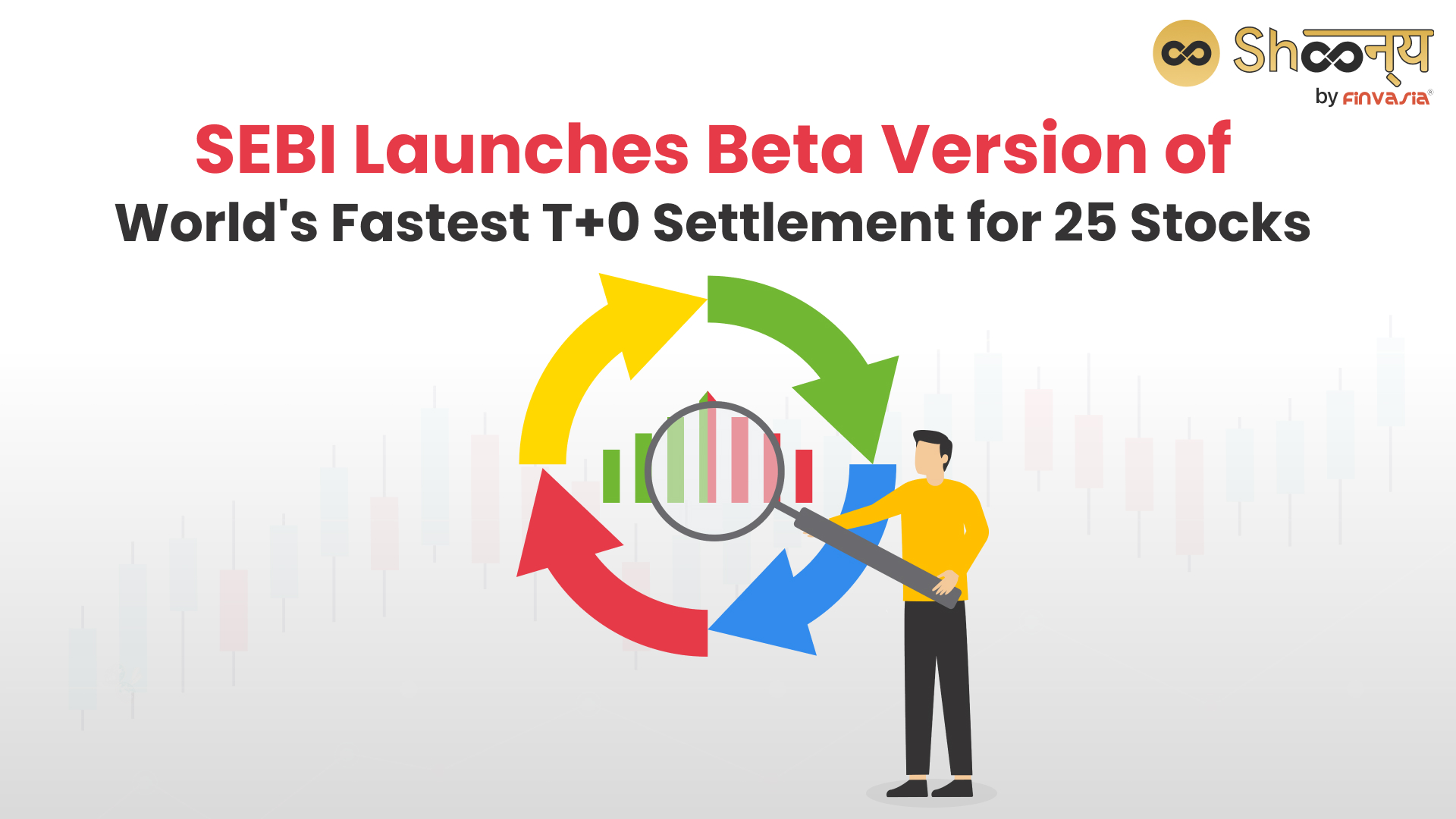Today marks the initiation of the world’s fastest same-day settlement for stocks in the Indian stock market. SEBI has introduced the Beta version of the T+0 settlement cycle. An optional basis allows for testing alongside the existing T+1 settlement cycle in equity cash markets. This move aims to enhance market efficiency and reduce transactional risks, providing immediate liquidity to investors.
Key Highlights of SEBI Circular on T+0 Settlement
- T+0 settlement allows immediate transfer of securities and real-time fund transfers.
- The shortened settlement cycle aims to enhance cost efficiency and time effectiveness.
- SEBI framework for the beta version of the T+0 settlement cycle is limited to a set of 25 scrips.
- Trading timings will be from 09:15 AM to 1:30 PM in a continuous session.
- Price band in the T+0 segment will operate with a range of +100 basis points from the regular T+1 market price.
- Market Infrastructure Institutions (MIIs) will publish guidelines and FAQs.
- MIIs will disseminate the list of participating brokers periodically.
- MIIs will provide a fortnightly report on the progress of activities in the beta version of T+0 settlement cycle.
- The circular comes into effect from March 28, 2024.
T+0 Settement Meaning
“T+0 settlement” means that securities transactions settle on the same day they occur.
Investors can complete and settle stock transactions on the day of execution without any delay.
It aims to provide quick liquidity to investors in the market.
Implementation of T+0 Settlement
As per the circular, the beta version of the T+0 rolling settlement launches today, i.e. March 28th, 2024.
Hereby, the Bombay Stock Exchange (BSE) and the National Stock Exchange (NSE) will commence same-day settlement for 25 selected stocks from today.
List of Eligible Stocks for T+ 0 Settlement
A recent circular by the BSE revealed the 25 companies forming part of T+ 0 Settlement Share List:
- Ambuja Cements
- Ashok Leyland
- Bajaj Auto
- Bank of Baroda
- Bharat Petroleum Corporation
- Birlasoft
- Cipla
- Coforge
- Divis Laboratories
- Hindalco Industries
- Indian Hotels Company
- JSW Steel
- LIC Housing Finance
- LTI Mindtree
- MRF
- Nestle India
- NMDC
- Oil and Natural Gas Corporation
- Petronet LNG
- Samvardhana Motherson International
- State Bank of India
- Tata Communications
- Trent
- Union Bank of India
- Vedanta
However, notable companies like Reliance Industries, Infosys, and TCS are absent. The criteria for selection remain undisclosed.
What Does T+0 Settlement Mean for Investors?
T+0 settlement means that investors can complete and settle their stock transactions on the same day they execute them.
This offers immediate transfer of securities and real-time fund transfers.
Benefits of T+0 Settlement
This new settlement system aims to enhance cost efficiency, time effectiveness, and transparency in investor charges. It builds upon the existing T+1 cycle and may pave the way for instant settlement in the future.
- Quicker turnaround times for settling trades
- More efficient utilisation of funds
- Increased transparency in the securities market ecosystem
- Enhanced risk management opportunities
What Does T+0 Settlement Mean For Brokers?
For brokers, the latest beta version of the T+0 rolling settlement cycle introduced by SEBI means an opportunity to engage in faster settlement cycles.
This can potentially increase trading volumes and enhance liquidity in the market. However, it may require brokers to adjust their operational and risk management strategies. This may be needed to accommodate the new settlement cycle effectively.
- Enhanced Efficiency
T+0 settlement allows for immediate trade settlement. This shall help streamline brokerage operations and improve efficiency. - Competitive Advantage
Brokers can gain a competitive edge by offering faster settlement times. They can attract traders who value quick access to funds and securities. - Cost Savings
Shortened settlement cycles lead to lower capital requirements and reduced margin financing costs for brokers. - Improved Client Service
Faster settlement enhances the trading experience, increasing client satisfaction and loyalty.
Technological Advancements Drives This Move
Recent advancements in technology and capacity have played a crucial role in this transition. India’s depository ecosystem provides digital visibility of individual client holdings. The payments and settlements ecosystem allows real-time fund transfers, further enhancing efficiency.
Evolution of Trade Settlement Cycles in India
The evolution of trade settlement cycles in India has been notable.
Beginning with a T+5 settlement cycle, India steadily progressed to T+3 in 2002 and further to T+2 in 2003. In 2021, SEBI introduced the T+1 system as a significant step towards faster settlement. This became the standard practice in 2023.
Now, the beta version of the T+0 settlement is a significant move. It indicates a continuous drive towards greater efficiency and innovation in the securities market.
Conclusion
SEBI’s dedication to enhancing India’s capital market infrastructure is evident in its focus on digitalisation. Its forward-looking approach is evident in its push for a T+0 cycle.
Source- hindustantimes.com, sebi.gov.in/legal/circulars/mar-2024
______________________________________________________________________________________
Disclaimer: Investments in the securities market are subject to market risks; read all the related documents carefully before investing.

